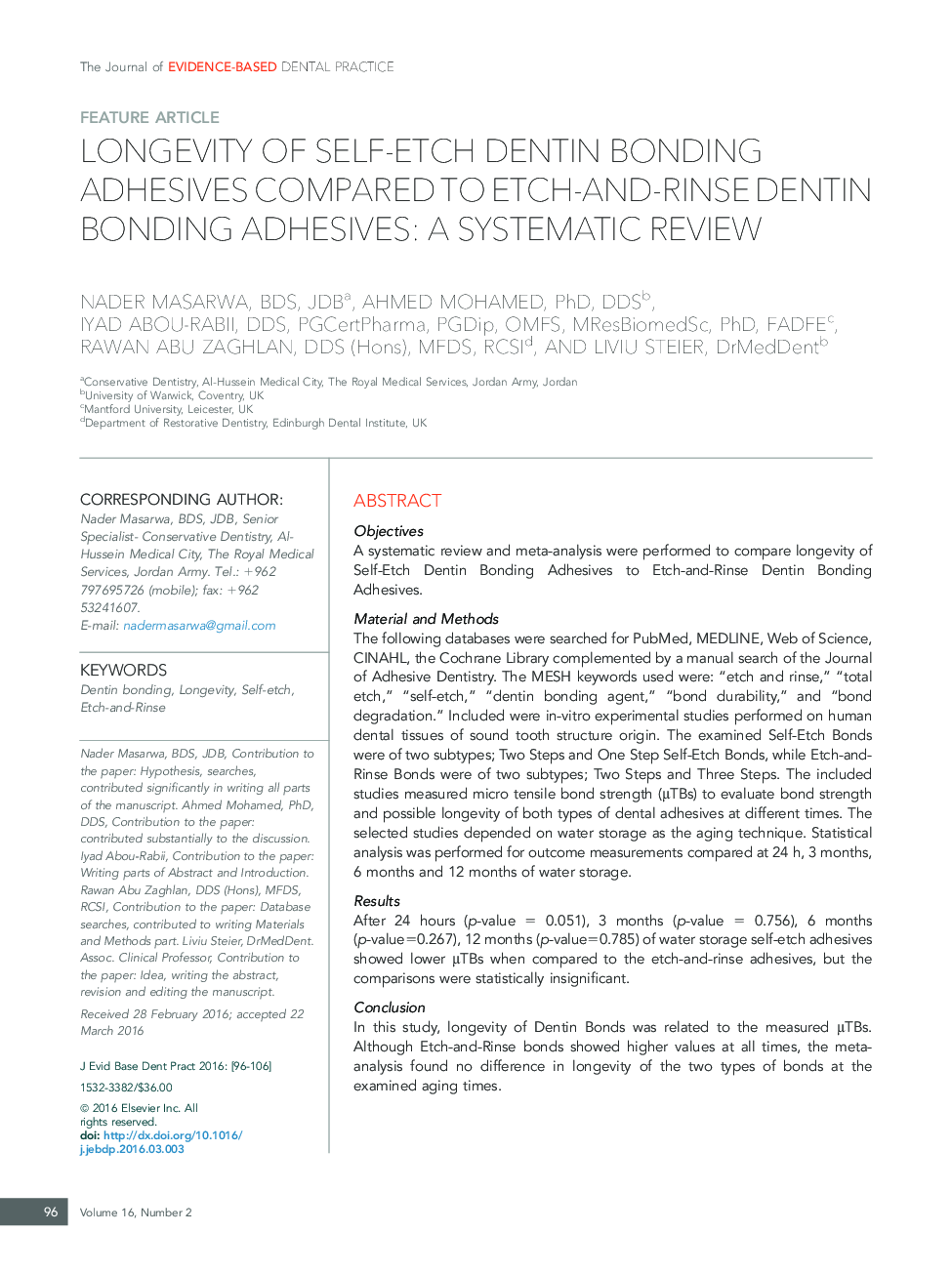| Article ID | Journal | Published Year | Pages | File Type |
|---|---|---|---|---|
| 3150961 | Journal of Evidence Based Dental Practice | 2016 | 11 Pages |
ObjectivesA systematic review and meta-analysis were performed to compare longevity of Self-Etch Dentin Bonding Adhesives to Etch-and-Rinse Dentin Bonding Adhesives.Material and MethodsThe following databases were searched for PubMed, MEDLINE, Web of Science, CINAHL, the Cochrane Library complemented by a manual search of the Journal of Adhesive Dentistry. The MESH keywords used were: “etch and rinse,” “total etch,” “self-etch,” “dentin bonding agent,” “bond durability,” and “bond degradation.” Included were in-vitro experimental studies performed on human dental tissues of sound tooth structure origin. The examined Self-Etch Bonds were of two subtypes; Two Steps and One Step Self-Etch Bonds, while Etch-and-Rinse Bonds were of two subtypes; Two Steps and Three Steps. The included studies measured micro tensile bond strength (μTBs) to evaluate bond strength and possible longevity of both types of dental adhesives at different times. The selected studies depended on water storage as the aging technique. Statistical analysis was performed for outcome measurements compared at 24 h, 3 months, 6 months and 12 months of water storage.ResultsAfter 24 hours (p-value = 0.051), 3 months (p-value = 0.756), 6 months (p-value=0.267), 12 months (p-value=0.785) of water storage self-etch adhesives showed lower μTBs when compared to the etch-and-rinse adhesives, but the comparisons were statistically insignificant.ConclusionIn this study, longevity of Dentin Bonds was related to the measured μTBs. Although Etch-and-Rinse bonds showed higher values at all times, the meta-analysis found no difference in longevity of the two types of bonds at the examined aging times.
